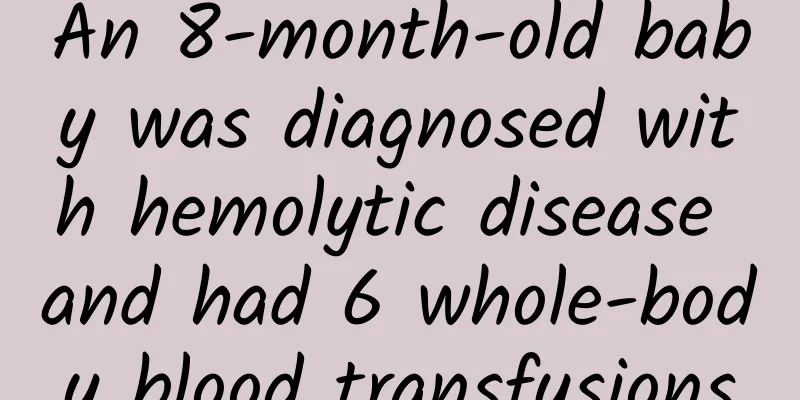An 8-month-old baby was diagnosed with hemolytic disease and had 6 whole-body blood transfusions

|
Science Fiction Network, January 19 (Jin Kaiyi) Recently, an 8-month-old baby had a swollen belly and yellow-green skin. He was diagnosed with hemolytic disease and underwent 6 blood transfusions. The doctor said he only had half a month to live, but the child gradually got better after treatment, and his parents spared no effort to take him to treatment. The mother said that the child had been hospitalized 8 times and ICU 4 times because of convulsions, but she was still determined to treat the child. Hemolytic anemia is anemia caused by an increase in the rate of red blood cell destruction (shortened life span), which exceeds the compensatory capacity of bone marrow hematopoiesis. The causes of accelerated red blood cell destruction can be summarized as intrinsic defects of red blood cells themselves and abnormalities of external factors of red blood cells. The former is mostly hereditary hemolysis, while the latter causes acquired hemolysis. There are many clinical classification methods for hemolytic anemia. According to the onset and condition, it can be divided into acute and chronic hemolysis. According to the site of hemolysis, it can be divided into intravascular hemolysis and extravascular hemolysis. Although there are many types of hemolytic anemia, they all have certain common characteristics. The clinical manifestations of hemolytic anemia are mainly related to the duration of the hemolysis process and the severity of hemolysis. Chronic hemolysis is mostly extravascular hemolysis, which develops slowly and manifests as anemia, jaundice, and splenomegaly. Since long-term hyperbilirubinemia can affect liver function, patients may suffer from cholelithiasis and liver damage. Acute hemolysis develops rapidly, and large amounts of hemolysis in a short period of time causes chills, fever, headache, vomiting, pain in the limbs, back, and abdomen, followed by hemoglobinuria. In severe cases, acute renal failure, peripheral circulatory failure, or shock may occur. Jaundice, pale complexion, and other symptoms and signs of severe anemia will follow. Whether hemolysis can be cured depends on the cause of the hemolysis. Hemolysis caused by abnormalities in the red blood cells themselves generally cannot be cured, but hemolysis caused by external abnormalities in the red blood cells may be cured. |
>>: To prevent myocarditis, coenzyme Q10 is snapped up! Who is behind the sudden popularity?
Recommend
Female back waist concave
The Internet is becoming more and more developed ...
What causes watery leucorrhea after menstruation?
It is normal for women to have leucorrhea, and as...
Can I get pregnant after having an IUD for several years?
If a female friend has taken measures to insert a...
Where are the ovaries located in women?
We all know that women have two ovaries, which ar...
Dysfunctional uterine bleeding during adolescence is very harmful, and timely treatment is crucial
Adolescent functional uterine bleeding refers to ...
Is it true that if you don't treat cancer, stay in a good mood, eat well and sleep well, you can live longer?
In early 2021, the World Health Organization'...
What causes stomach pain during pregnancy?
There is a saying in our country that if people e...
How long should I rest after the abortion?
Medical abortion is actually a method of abortion...
eMarketer: The number of adult wearable device users in the U.S. is expected to reach 50.1 million in 2018
199IT original compilation Smart speakers may bea...
Dull pain in the right lower abdomen during early pregnancy
When a pregnant woman is pregnant, not only shoul...
What to do if vaginal injury and bleeding occurs?
In daily life, the female vagina is a relatively ...
How to clean octopus? How to eat octopus?
Octopus is rich in nutrients and can promote the d...
What are the side effects of abortion?
What all women need to understand is that the har...
4 months pregnant sex position
The fourth month of pregnancy is the middle stage...









